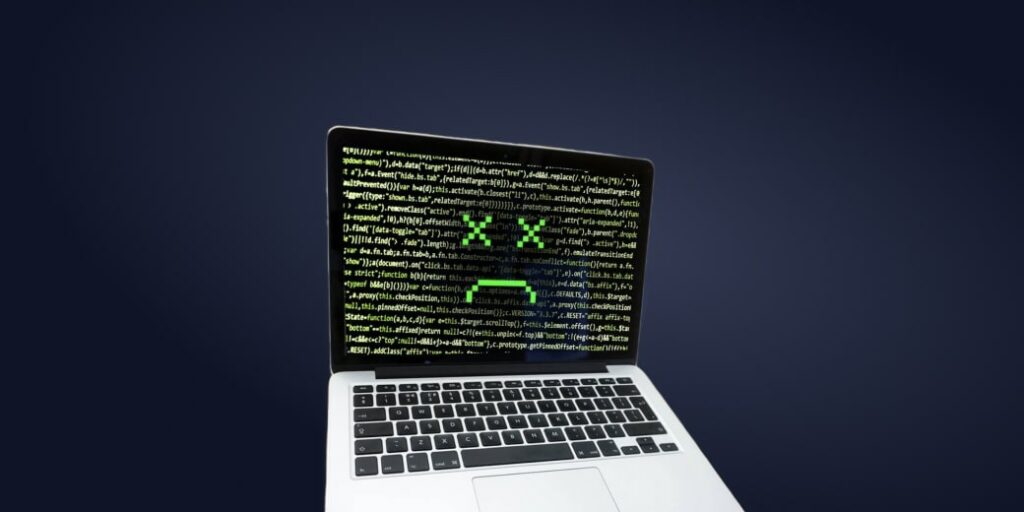Apple Corporation regularly releases a wide range of devices, including computers and laptops, selling hundreds of millions of devices every year. Apple products are known for their high quality and performance, making them a preferred choice for effective and comfortable work.
When it comes to the security of Apple’s operating systems, some users have an important question: is it necessary to protect devices from malware using additional antivirus software, in addition to the built-in security features?
Let’s figure out together whether an antivirus is really necessary for Mac computers and what considerations should be taken into account regarding cybersecurity for Apple brand devices.
Security Features of macOS

The macOS operating system is used on Apple computers and provides built-in security mechanisms aimed at protecting against various threats.
Let’s review the key security technologies of macOS and the specifics of their operation.
The security of the macOS operating system relies significantly on its architecture and security models, based on Unix technologies that have proven their reliability over decades. This operating system also relies on a set of internal security services, such as Gatekeeper, the notarization service, and XProtect.
Gatekeeper
Gatekeeper is a security mechanism that helps protect the computer from malicious software by controlling the applications installed on the device.
Key methods employed by Gatekeeper to ensure security:
- Application signature check: Upon an application’s initial launch, Gatekeeper verifies the application’s signature and its source to ensure that it was created and distributed by a developer who obtained a developer certificate from Apple.
- Protection against unknown developers: When an application is downloaded from the internet without a valid signature, Gatekeeper can warn the user about potential security threats and restrict the launch of such applications.
- Security level control: Users can independently configure the security level, allowing the installation of applications from the Apple App Store.
Primary limitations of Gatekeeper in providing security:
- Limitation on known threats: Gatekeeper relies on a list of known developers and digital signatures of applications. This means it may not always provide protection against new, unknown threats or programs lacking a digital signature.
- Bypass capability by user settings: Users can temporarily change security settings and install applications that might otherwise be blocked by Gatekeeper. This increases the risk of potential infiltration of malicious software onto the device.
- Potential for attacks to bypass vulnerabilities in legitimate applications: Gatekeeper may not protect against threats that exploit vulnerabilities in legitimate applications to infiltrate the system.
- Potential for malicious applications signed with stolen certificates to bypass: Occasionally, developers of legitimate applications inadvertently leak private cryptographic keys, exploited by attackers to sign their applications.
- Dependency on security updates: Gatekeeper requires constant security updates since new threats, new legitimate developers, and existing developers changing their digital signatures constantly emerge.
- Inability to prevent social engineering: Gatekeeper focuses on application checks rather than preventing attacks through user manipulation. It cannot thwart threats associated with social engineering or user deception.
XProtect
XProtect is an embedded antivirus technology in macOS that operates in the background, unnoticed by the user. XProtect is designed to detect and prevent the spread of known Apple malicious software on Mac devices.
Key methods employed by XProtect to ensure security:
- Signature-based scanning: XProtect utilizes a signature database containing information about known viruses and malware. When a file is opened or downloaded, the system compares it with this database to determine if it contains signs of a known threat.
- Regular security updates: Apple consistently updates the signature database and functionality of XProtect. This enables XProtect to detect new threats and provide up-to-date protection.
- Warnings and blocking: Upon detecting suspicious files, XProtect provides warnings to the user and can block the execution of these files to prevent potential security threats.
Primary limitations of XProtect in providing security:
- Dependence on signatures: XProtect only detects threats for which corresponding signatures exist in its database. New or unknown threats not included in the database may bypass detection.
- Limited protection: While XProtect offers basic protection, it may not be sufficiently effective against advanced threats.
- Inability to protect against social engineering: Similar to Gatekeeper, XProtect cannot shield users from phishing, deception, and psychological manipulations.
Safari Protection
Safari protection on macOS comprises a set of security measures designed to ensure a safe and secure internet browsing experience for users operating the Safari browser.
Several key points describe Safari protection:
- Protection against known phishing sites: Safari includes a feature to guard against phishing sites, warning users about visiting known or potentially malicious sites. The browser checks visited web pages for fraudulent or malicious elements and alerts the user if suspicious activity is detected.
- Tracking prevention: Safari offers tracking prevention to help thwart the tracking of your online activity by third-party sites. This minimizes the amount of personal data that can be collected about you without your consent.
- Intelligent password protection: Safari can suggest unique complex passwords for new accounts and store them in encrypted form. This helps avoid using the same password for different accounts.
- Security updates: Safari is regularly updated to fix identified vulnerabilities and enhance protection, so it’s crucial to keep it updated to the latest version.
Primary limitations of Safari in providing security:
- Limited control over extensions: Compared to some other browsers, Safari has limited extension support. User capabilities for using additional security tools may be restricted.
- Slower security feature updates: Some security features of Safari might update less frequently than its competitors. This could slow down the browser’s response to new types of threats.
- Limited capabilities in identifying new phishing sites: Despite blocking known and suspicious phishing sites, Safari might not recognize some recently emerged phishing sites.
Antiviruses for Mac – Sources of Viruses?

Researchers at Elastic Security Labs have stated that the MacKeeper application, designed to protect Macs and enhance their performance, introduces 48% of malicious programs targeted at macOS into Apple computers.
The research findings raise serious concerns regarding the effectiveness and security of MacKeeper, which has had a rather controversial reputation.
MacKeeper has been associated in the past with aggressive marketing campaigns, including pop-ups and not always transparent pricing information. Additionally, some accusations against MacKeeper involve data security issues and system slowdowns.
Considering these facts, it’s worth considering the necessity of additional expenditure on third-party antivirus software. Integrated security tools such as XProtect provide basic protection, whereas some third-party antivirus software might not only be unnecessary but could also pose a risk to the device and its performance.
Our recommendations and additional security measures for macOS users

To ensure security on macOS devices, there are several methods to protect against malicious software and other threats.
The primary recommendations to ensure the security of computers running macOS and your information include the following measures:
- Avoid opening email attachments or links from unknown senders, as well as clicking on links in unexpected pop-up windows.
- Regularly install all the latest software updates as soon as they become available.
- Do not overlook heightened security settings when installing new applications if you have doubts about their security.
- Activate FileVault, an application that encrypts information on your device, making it inaccessible to unauthorized users without a password.
- Protect folders with a password to maintain confidential data and grant access only to those with the corresponding password.
- Regularly backup files. This will help retain them in case of potential issues with your Mac, such as loss, theft, or malfunction.
- Create a guest account for temporary guests. Guests will have access to the internet and applications, but won’t be able to view files stored on their Mac.
- Check the privacy settings on your Mac to configure permissions for applications, and determine access to various information such as your location, contact list, calendar, and other data.
- Set up the “Find My Mac” service to track and protect your computer in case of loss or theft.
- Set a strong passcode, and if your device supports Touch ID, activate it.
- Acquire applications exclusively from the App Store, a verified and reliable source.
- Activate two-factor authentication (2FA) in your iCloud account.
- Use a VPN to secure your connection from hackers and prevent tracking by websites, ensuring anonymity on the internet. A VPN will also encrypt your browser data, preventing malicious actors from monitoring your online activities.
- Turn off the remote and share access. Remote access allows you to work with files while away from your computer. However, if your credentials fall into the wrong hands, it can also provide access to your files and data remotely.
- Disable Wi-Fi and Bluetooth when not in use. Turning off Bluetooth, especially in environments where security is questionable, is recommended if the connection is not being used.
The recommendations listed above help create a more secure defense for your device and information against potential cyber threats.
Conclusions

You can consider the decision on the necessity of additional protection in the form of antivirus software for Mac based on individual circumstances and needs.
If your work involves confidential information, or you frequently visit suspicious sites, installing additional antivirus protection might be a justified precaution. However, it’s essential to consider that no antivirus can provide a guarantee of protection against all types of malware. Moreover, statistics reveal that quite often, third-party Mac security systems themselves become the cause of security issues.
Particular attention should be given to types of attacks based not on system technical vulnerabilities but on psychological manipulation. In such cases, defense against social engineering attacks may be an effective way to enhance awareness and security when working with a Mac.
If you’re a macOS software developer, ensuring the security of your product is your reputation. Therefore, we recommend utilizing code security analysis and other application security services.
In the event of security incidents on your Mac computers or with your Mac software or data, we provide professional investigation services. Our experts will conduct a thorough analysis of events, and prepare necessary evidence, and detailed reports, which could be critical in cases involving potential legal procedures.
If you have additional questions or need additional security support, please contact us. We are always ready to provide the necessary assistance and guidance.
_______________________________
Subscribe to our x.com page, so you don’t miss our new publications.
